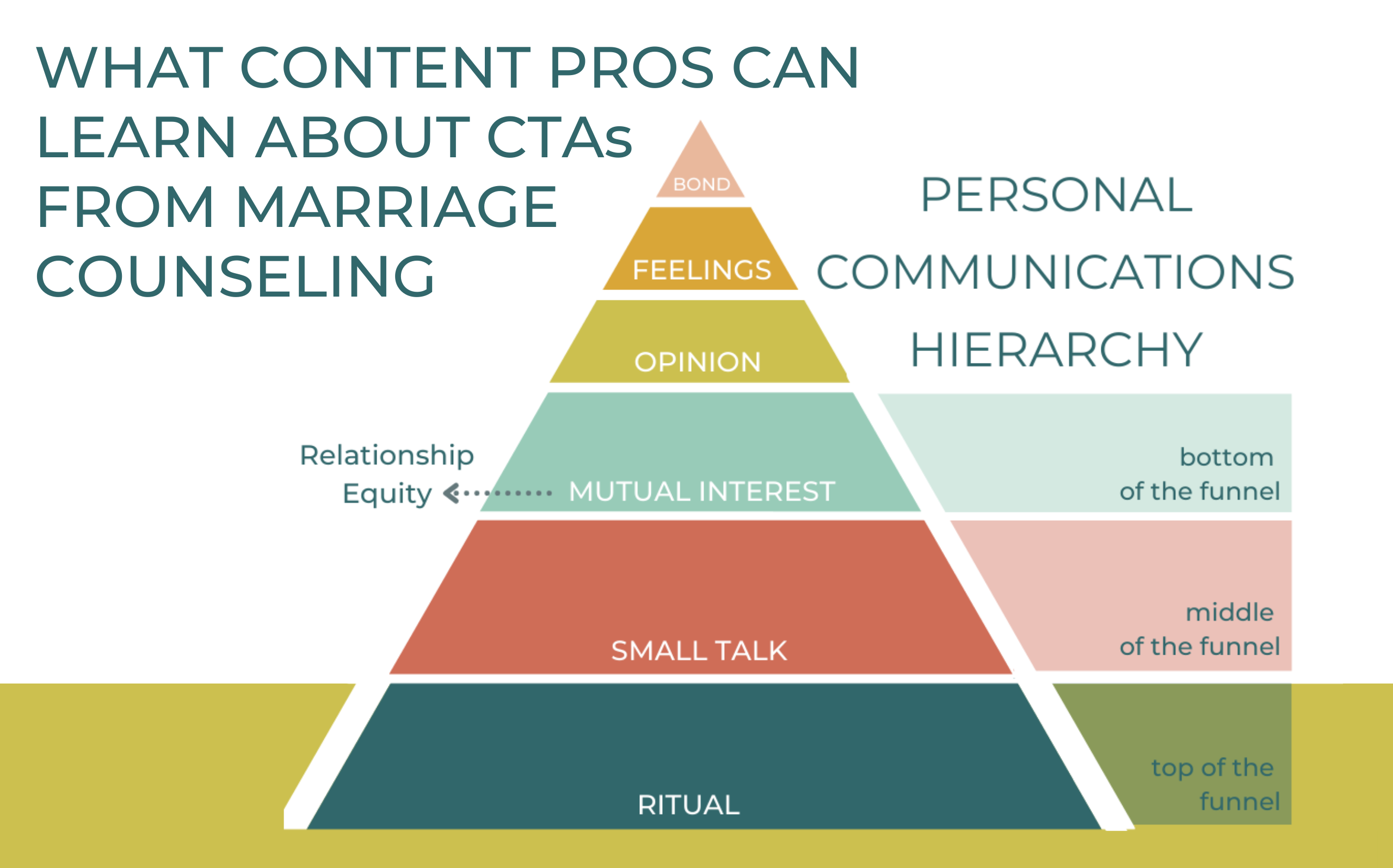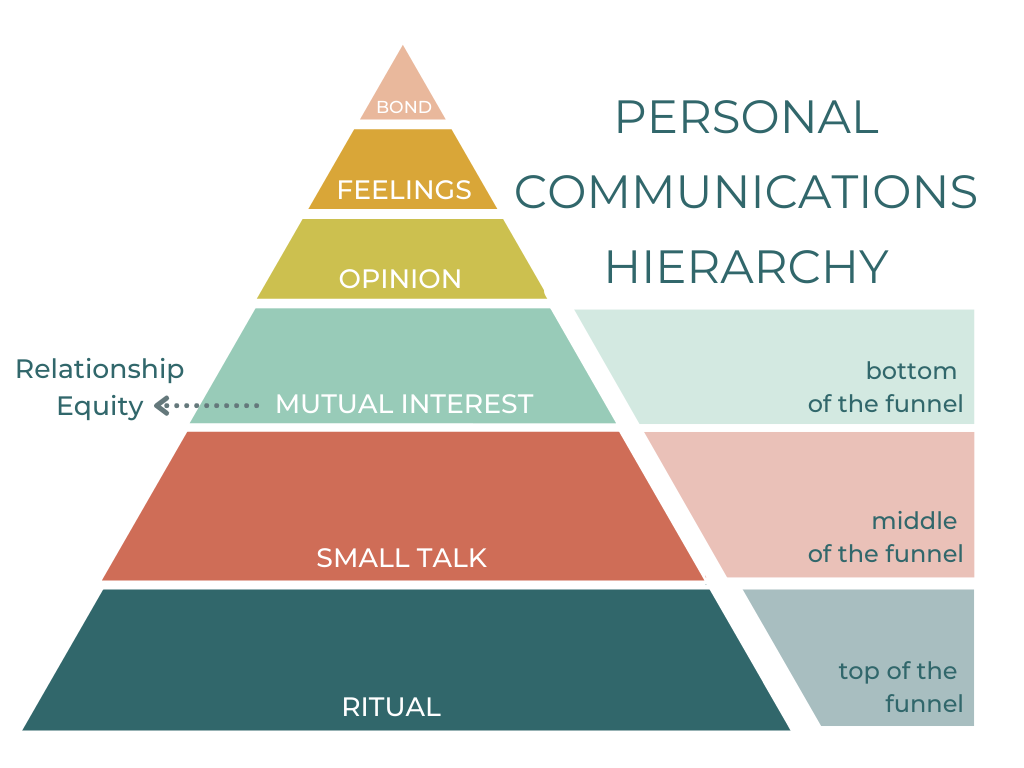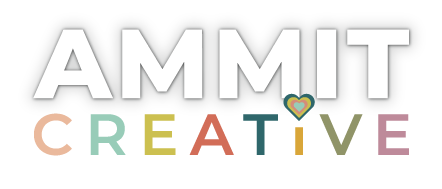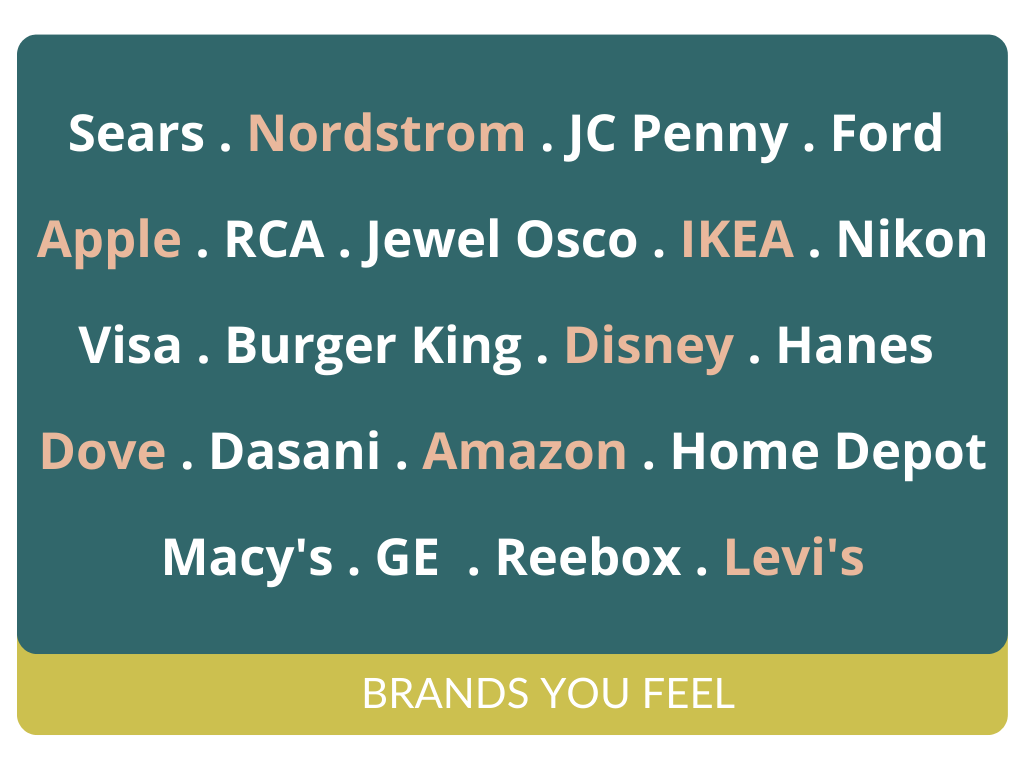
WHAT CONTENT PROS CAN LEARN ABOUT CTAs FROM MARRIAGE COUNSELING
Here’s a little something from the world of marriage counseling I find useful for content marketing: meet the personal communications hierarchy, shown here next to a wonky, upside down sales funnel, and for good reason. (Stick with me!)
First, if you’re wondering if it’s appropriate to adapt  something designed to speak to our most intimate personal relationships for professional use, I’m going to assure you it absolutely is. Digital marketing tactics are always better when you view them through a personal lens. You can’t spend one-on-one time with everyone you want to do business with, so your content shakes hands, shares lunches, and swaps personal stories on your behalf. That’s why, generally speaking, things that work in real life relationships—honesty, reliability, consistency, humor, etc—also work well for content strategies and tactics. This communication hierarchy is simply a way to think more concretely about the levels we go through as we meet, get to know, establish trust with, and ultimately commit to people … and brands.
something designed to speak to our most intimate personal relationships for professional use, I’m going to assure you it absolutely is. Digital marketing tactics are always better when you view them through a personal lens. You can’t spend one-on-one time with everyone you want to do business with, so your content shakes hands, shares lunches, and swaps personal stories on your behalf. That’s why, generally speaking, things that work in real life relationships—honesty, reliability, consistency, humor, etc—also work well for content strategies and tactics. This communication hierarchy is simply a way to think more concretely about the levels we go through as we meet, get to know, establish trust with, and ultimately commit to people … and brands.
Stage one—ritual—roughly corresponds to top of the funnel content. (If you’re not clear about what top of the funnel content is, page 7 of this whitepaper should help.) It’s the cliche head nod when someone you don’t know at a party makes eye contact. It’s where your audiences notice your brand content and wonder if they want to know more.
Once you’ve got their attention, if your content is well targeted, speaks to their needs and values, and manages to engage, you might just shift them into stage two, small talk. This is where you spend enough time together to figure out that you have something in common. In personal relationships, this stage might be the moment you realize the nice woman next to you at the party went to your high school. From a content marketing POV, this mid-funnel stage is where target audiences pay more attention to you. They realize you might be more than brand they notice in passing—you might be useful. Convincing them that yes, you are in fact a good candidate for a useful professional resource gets you to…
… stage three, the money stage. This bottom of the funnel / middle of the hierarchy stage is the point of mutual interest, a key stage for growing great personal and professional relationships, and for convincing target audiences to commit. This is where you acknowledge and act on the established “relationship equity.” You and the nice woman from high school might meet for lunch the following week. From a content POV, this is where you convert. You’ve got their attention, you’re growing the bond and convincing them they want you around. Both trust and risk escalate for relationships that make it to and through this stage. They’re ready to do business. That means you should be ready to ask for the business, which (finally) get us to CTAs…
One challenge I see clients struggle with often is what I think of as the dreaded call-to-action challenge. The communication hierarchy usefully reframes this problem. Let me explain. In this hierarchy, if you jump a level, you’re punished. You don’t care about someone’s opinions, for example, until you’ve shared small talk and established mutual interest. You have to earn your right to have your opinion taken seriously. Think of the guy who walks into a room of strangers and yells about politics. Even if you’re likeminded you might be turned off, and certainly those who don’t agree wholeheartedly will react strongly, and negatively. He’ll be “ceilinged,” which means nothing he says will be valued. (The only way to fix that problem, btw, is to start from the bottom and move through the stages again–a do-over, so to speak.)
In content marketing terms, this is bit like attaching a bottom of the funnel call-to-action to top of the funnel content. If you’ve crafted an attention-grabbing web ad to introduce your product or service to an audience that didn’t know it existed two days ago, it might be a great way to drive people to a landing page, but it’s probably not a great spot for a “buy now” button. But—and this is the important part—once you’ve led audiences through the funnel (or up the hierarchy), you can ask for the close. Really, “buy now” is a great call-to-action… after you’ve established mutual interest, that is, after you’ve earned it with all the informative, educational content you shared in the earlier relationship phases. Don’t be scared of it. Just be prepared to earn it.
The higher stages of the hierarchy are all about BFFs and BFs and GFs and moms and brothers and kids—your people. A few rarified “charismatic” brands do reach a place where their opinion matters. A “charismatic brand,” if you’re wondering, is any product, service or organization people believe has not substitute. You know the brands. Don’t believe me? Let’s test it. Eyeball the brands below, guess which brands are charismatic, and check your work in the second image.
Excellent. Yes, these highlighted brands are impossible to replicate. They stand out because they make you feel. They can and do share options on topics like criminal justice (think Nike) and loving yourself in any size (we see you, Dove). And they give some of us the feels when they do it. But remember, that’s probably not what you’re shooting for. You can execute a successful content strategy if you stay real, authentic and helpful. And once you’ve done that, don’t be shy about your ask!




 To understand our name, you need to know two women: our founder … and an ancient Egyptian demon goddess.
Because yep, Ammit is an ancient demon goddess. Often called the Devourer, Ammit gobbles up the hearts of the undeserving when they die. If that sounds like a strange character to name a content marketing firm after, you should get to know our founder and leader, Malayna Evans. In addition to a passion for clients and content, Malayna is a legit expert in ancient history. So when she started the biz, a demon goddess who specializes in understanding life stories, analyzing emotional realities, and gobbling up hearts seemed like an appealing fit.
To learn more about Malayna, content marketing, and possibly an occasional dash of ancient history, check out our blog.
To understand our name, you need to know two women: our founder … and an ancient Egyptian demon goddess.
Because yep, Ammit is an ancient demon goddess. Often called the Devourer, Ammit gobbles up the hearts of the undeserving when they die. If that sounds like a strange character to name a content marketing firm after, you should get to know our founder and leader, Malayna Evans. In addition to a passion for clients and content, Malayna is a legit expert in ancient history. So when she started the biz, a demon goddess who specializes in understanding life stories, analyzing emotional realities, and gobbling up hearts seemed like an appealing fit.
To learn more about Malayna, content marketing, and possibly an occasional dash of ancient history, check out our blog.
Leave a Reply
You must be logged in to post a comment.